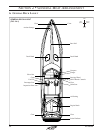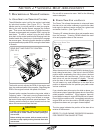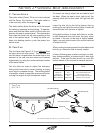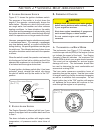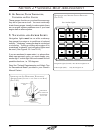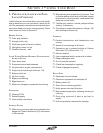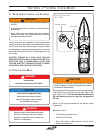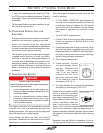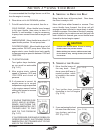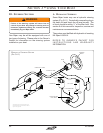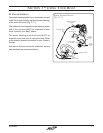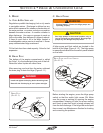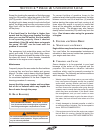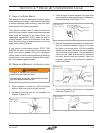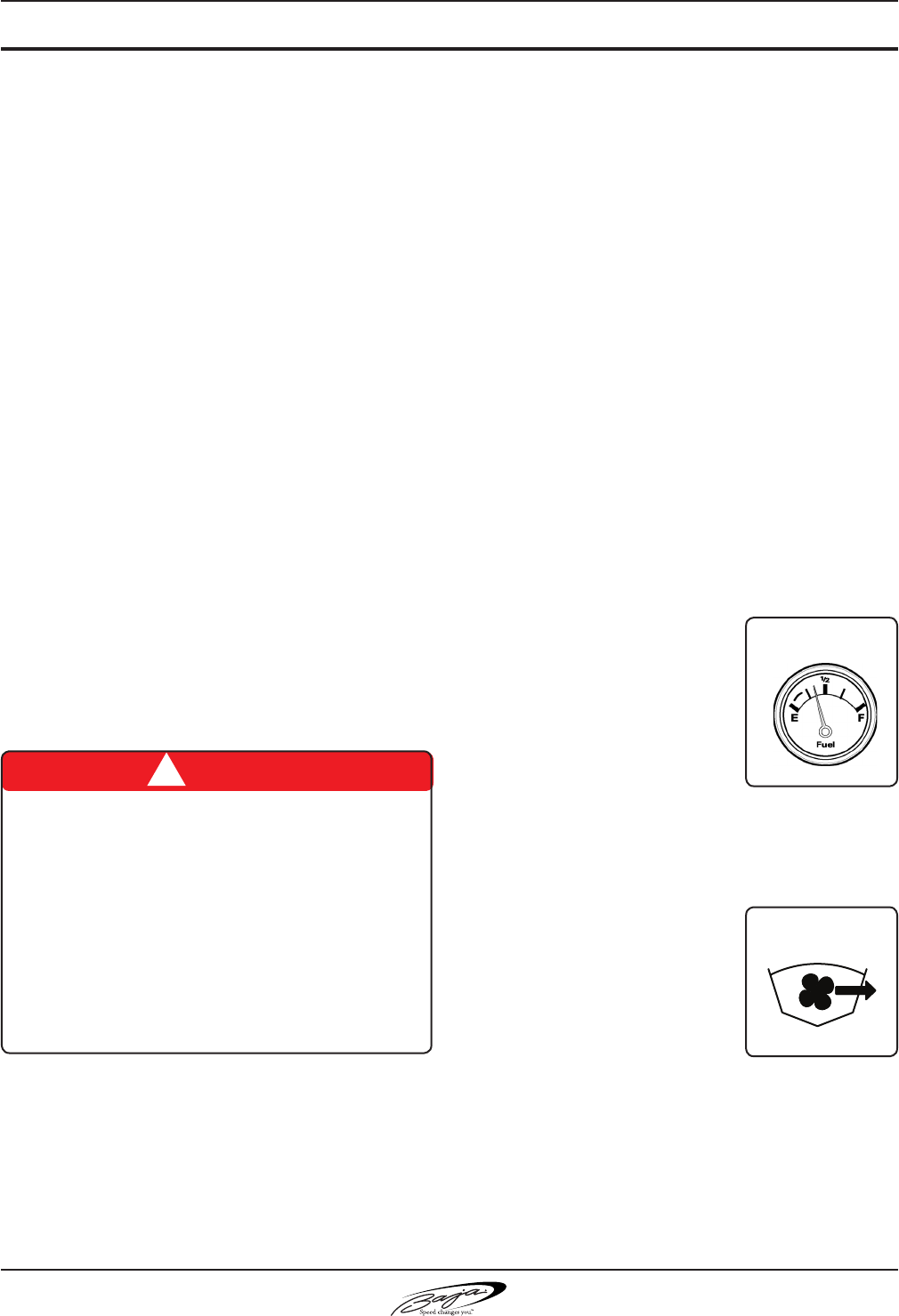
3.4
SeCtiOn 3 • uSing yOur BOat
40 Outlaw
®
• If there are passengers not wearing PFDs,
the PFDs must be readily accessible. “Readily
accessible” means out of the storage bag and
unbuckled.
• All throwable otation devices (cushions, rings,
etc.) must be right at hand.
6. passenGer insTrucTion anD
locaTion
• Everyone on board must be told about the boat’s
behavior from starting to getting up on plane.
• Before the operator does any high-speed
maneuvers or rapidly accelerates or decelerates
the boat, passengers must be warned to sit and
hold on and must heed the warning.
• The operator may have to make rapid changes
in speed and/or direction to avoid a problem,
with little or no time for alerting passengers. It
is critical that all passengers be seated in the
designated seating areas and holding on to
prevent falling overboard or getting knocked
about in the boat at all times when the boat is
underway.
7. sTarTinG The enGine
The engine operation and maintenance manual
furnished with your boat describes pre-start and
starting procedures. We urge you to thoroughly read
and understand your engine manual.
Listed below are basic pre-start and starting
reminders. These are not a substitute for the engine
manufacturer’s specic recommendations.
Open the engine compartment and check for the
smell of gasoline.
• IF YOU SMELL GASOLINE, get everyone off
the boat, do not operate any electrical switches
or light any matches, lighters, etc. Get trained
help to nd and x the problem, before starting
the engine or operating any switches on the
boat.
• If you DO NOT smell gasoline:
1. Check all uid levels and any other necessary
checks as specied in Section 8 and in the
engine manual.
2. Check that water level in bilge is minimal. Verify
that the bilge pump is operating by turning the
bilge pump switch to MANUAL and listening for
the pump running and check to see that bilge
water is being pumped overboard.
3. Close engine compartment.
4. Check fuel level. Be sure
you have enough fuel for
your trip. Remember the
“1/3 Rule”: Use no more
than 1/3 of your fuel for
outbound trip; use 1/3 of
the fuel for return trip; keep
1/3 for reserve in case of
emergency (FIG 3.4.1).
5. Run bilge blowers for at least 4 minutes before
attempting to start engine (FIG 3.4.2).
Unlike your automobile engine
which is naturally ventilated
even when it is not moving, your
boat engine compartment (the
bilge) does not have sufcient
natural ventilation when the
boat is not moving or moving
slowly. That is why the engine compartment must
have forced ventilation, using the bilge blower, to
remove potentially explosive gasoline vapors before
the engine is started and when the boat is moving
slowly.
Because it may be difcult to remember to turn on
the bilge blower every time you slow down the boat,
Gasoline vapors can explode
Before starting the engines, open engine compartment
and check for gasoline smell.
• If you smell gasoline, do not start engine; get
everyone off the boat and get trained help to nd
and x the problem.
• If there is no gasoline smell, perform checks
specied by manual, then and only then, close
engine compartment and run blower for at least
4 minutes before starting.
! DANGER
(Fig. 3.4.1)
(Fig. 3.4.2)



